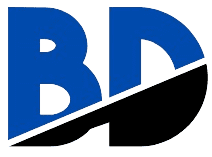Nowadays, businesses buy a wide range of products and services for various uses. The procure-to-pay process includes all procedures involved in the full lifecycle of procuring products and services.
This process, which requires extensive financial inspections and self-control, involves several parties and intricate workflows, from the original request to the final payment. To achieve operational efficiency and cut costs, all procurement activities must have a clearly defined procure-to-pay procedure. Procure-to-pay solutions help push the company toward greater profit.
Procure-to-Pay, or P2P, refers to the entire procedure that a company uses to buy products or services. It includes every stage, from placing the order for the products or services to making the supplier payment.
A company that needs to buy office chairs is an example of P2P. First, a purchase requisition is made. Then, it’s accepted according to specified standards. After selecting a provider, the business would place an order. The chairs’ delivery is compared to the order upon delivery. After that, the supplier’s invoice is received, examined for accuracy against the order, authorised, and paid. The P2P process encompasses the complete procedure, from determining the need to completing the payment.
Challenges in the Procure-to-Pay Process
There are difficulties in putting the procure-to-pay (P2P) procedure into practice.
As we’ve seen above, P2P is like a relay race; the effectiveness of a company’s P2P process is determined by how quickly each task is completed and how smoothly it transitions to the next.
Let’s examine a few typical difficulties encountered during the P2P process:
Errors and Manual Procedures: Many companies still manually handle data entry, workflow approval, invoice processing, and other P2P cycle tasks. This reliance on manual labour exposes organisations to delays, inconsistencies, and human error.
Lack of Control and Insight: Businesses frequently lack insight into the P2P process when they do not have a centralised system to oversee procurement activities. Due to the lack of transparency, it is challenging to keep track of expenditures, and unapproved transactions frequently slip through the cracks.
Complex Approval Workflows: In larger organisations, approval workflows in the P2P process can be laborious and time-consuming. Several layers of permission, hazy approval hierarchies, and slow responses can slow down the procurement process, impairing overall productivity and operational effectiveness.
Compliance and Regulatory Issues: Preventing legal and financial risks requires strict adherence to industry regulations, procurement practices, and compliance standards. However, manually maintaining compliance can be difficult and may result in fines, penalties, and harm to one’s reputation.
Data management and integration: From purchase requests to supplier invoicing, the peer-to-peer (P2P) process creates a lot of data. For accurate reporting and well-informed decision-making, this data must be managed and integrated efficiently across many systems, including accounting software and ERP. Inadequate data management can lead to disparities, duplication, and data silos.
An outmoded P2P procedure can severely slow down a business.
The Procure-to-Pay Solution: A Streamlined Path to Efficiency
The challenges mentioned above may result in a major obstruction in your company’s activities. Thankfully, there is an effective solution in the form of a Procure-to-Pay (P2P) solution that can automate and streamline the entire P2P process. A P2P solution addresses each problem as follows:
Eliminating Human Error and Manual Work: P2P solutions greatly reduce human error and streamline processes by automating data entry, invoice processing, and workflow approvals. This automation frees up resources that could be used for more strategic tasks.
Increased Control and Visibility: Real-time insights into each step of the procurement process are available through a centralised P2P platform. Better cash flow management, increased expenditure control, and the capacity to spot and stop maverick spending are all made possible by this openness.
Simplified Approvals: P2P solutions provide customisable workflow automation, eliminating the need for intricate, multi-step approval processes. The procurement cycle is sped up overall because of automated routing and pre-established approval standards that guarantee prompt decision-making.
Ensuring Compliance: P2P solutions can be set up to enforce internal procurement standards and industry requirements. Automated verifications and checks help reduce risk, both financial and legal, by reducing the likelihood of non-compliant purchases.
Smooth Data Management and Integration: An ERP and accounting programme that you already have will integrate easily with a P2P solution, which serves as a central repository for all P2P data. In addition to guaranteeing consistency and removing data silos, this offers a single platform for producing reports and making data-driven choices.
By implementing a P2P solution, businesses can transform their procurement process from a laborious effort into a competitive advantage. Thanks to P2P solutions’ automation, enhanced visibility, and streamlined workflows, businesses can maximise expenditures, boost operational effectiveness, and obtain a substantial competitive advantage.
Conclusion:
Effective procure-to-pay (P2P) processes are now essential for companies of all sizes, not just some. A strong P2P solution may hold the key to resolving the issues with conventional procurement methods. P2P solutions give businesses more agility, profitability, and a competitive edge by automating operations, enhancing visibility, and guaranteeing compliance.













